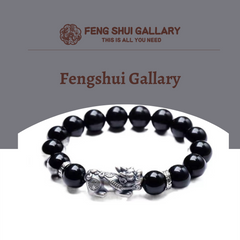Use of Tibetan Prayer Wheel For Peace
According to the Tibetan Buddhist tradition based on the lineage texts regarding prayer wheels, spinning such a wheel will have much the same meritorious effect as orally.reciting the prayers.
The prayer wheels are also called "mani" prayer wheels, Sanskrit prayer wheels, and prayer buckets. They are related to the eight-character mantra and the six-character mantra (six-character mantra). Tibetan Buddhism believes that the more mantras held, the Devotion to the Buddha can be freed from the suffering of reincarnation. Therefore, in addition to oral chanting, people also make "Mani" sutras. They put the "six-character mantra" in the sutras and turn them by hand. The Tibetan people put the scriptures in the sutras, and every time it turns One time is equivalent to chanting the scripture once, which means that the "six-character mantra" is repeated hundreds of times and thousands of times. Some people also made water-turning mani tubes and lamp-turning mani tubes with water power and light heat, and chanted the "six-character mantra" on their behalf.
The prayer wheels are generally divided into two categories: one is hand-cranked, and the other is fixed on the wheel frame in the temple.
As soon as you set foot on the land of Tibet, you can see from the side of the road and in the temples one by one Tibetans who are shaking the prayer wheels of various colors. Most of them are wearing colorful Tibetan robes, shaking the prayer wheels in their hands, and holding the other long handles. Put one end in this holster, and then put your right hand under the turning cylinder to make it gently turn clockwise! This kind of warp drum is usually made of wood. The white-haired old man turned the scripture tube in his hand, which is very light and handy. This kind is usually made of bone or metal, and the workmanship is more exquisite. Some are covered with a cloth cover, and the prayer wheel inside is very precious, mostly inlaid with precious stones.
The prayer wheel can be large or small, and the small one can be held in your hand. This kind of hand-cranked prayer wheel is also called a hand-cranked mani wheel. The texture is gold, silver, copper, etc., and it is also divided into large, medium and small. The main body of the prayer cylinder that can be held in the hand is cylindrical, with a shaft in the middle for rotation. Not only is the cylinder engraved with the six-character mantra of Tibetan Buddhism, but also contains mantras in the middle of the cylinder. The prayer wheels are generally exquisitely made. In addition to their original meaning, the engraved scriptures and some patterns of birds and beasts are also decorated with lacquer and color, just like handicrafts. Some prayer wheels are also inlaid with corals, gems, etc., which add value beyond their religious functions. There are ear holes next to the hand-cranked prayer wheel, and a small sinker is attached. When the handle under the cylinder is turned, the small sinker also moves, accelerating the rotation of the prayer wheel by inertia. With the rapid rotation of the prayer wheel, the person who passed the prayer determined that his merits were also rapidly accumulating.
There are various large prayer wheels in Tibetan temples. For example, outside the western wall of the Potala Palace, there is a row of prayer wheels. Tibetans must turn them clockwise with their right hand, and mutter in their mouths the six-character mantra: Om Mani Ba Ba Hun.
On the left side of the main entrance of Jokhang Temple, there are two huge prayer wheels. They are quite heavy. A tall lama in scarlet monk clothes is turning them vigorously. In the Jokhang Temple, there is a circle of prayer wheels around the temple. Tibetans who come to worship here must walk in a clockwise direction and move them with their hands to make them rotate together with the six-character mantras recited. These prayer wheels have experienced the vicissitudes of life, rich experience, purifying the soul, and endless charm.
Whether it is a hand-cranked type or a fixed type in a temple, the structure of the prayer wheel is similar. There is a scripture written in Tibetan in it. Because in the era of slavery, most Tibetans were illiterate, so the scriptures were packed in the prayer wheel, and each turn was equivalent to chanting the scriptures once. The prayer wheel has a rotatable shaft, and it needs to be updated every time it reaches a certain number of turns, so that Tibetans can know how many times they have chanted the scriptures.
On the grand religious festivals, Tibetans gathered in the Jokhang Temple square. The mani wheel that kept turning in his hands glowed with a dazzling light under the sunlight. The scene was very magnificent.
For centuries, this Mani wheel has always been accompanied by the magical six-character mantra. Under the fingertips of those devout believers exuding the sweet fragrance of butter, it rotates and dances tirelessly, conveying the wonderful communication between them and the Buddha.


